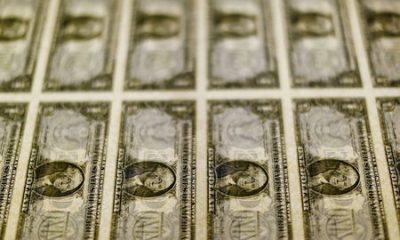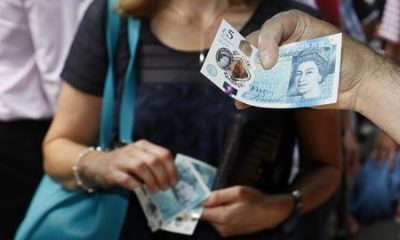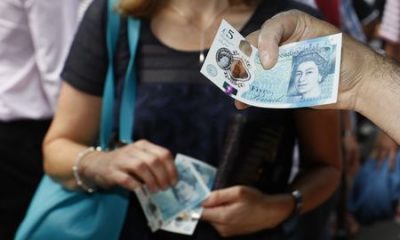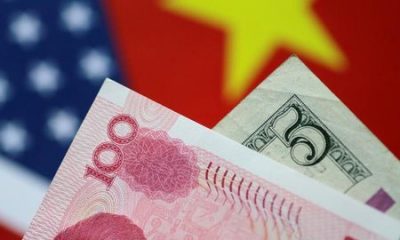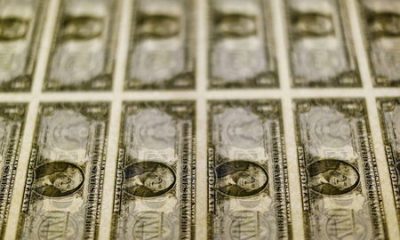Forex
Analysis-Japan faces a tough tug-of-war with yen bears
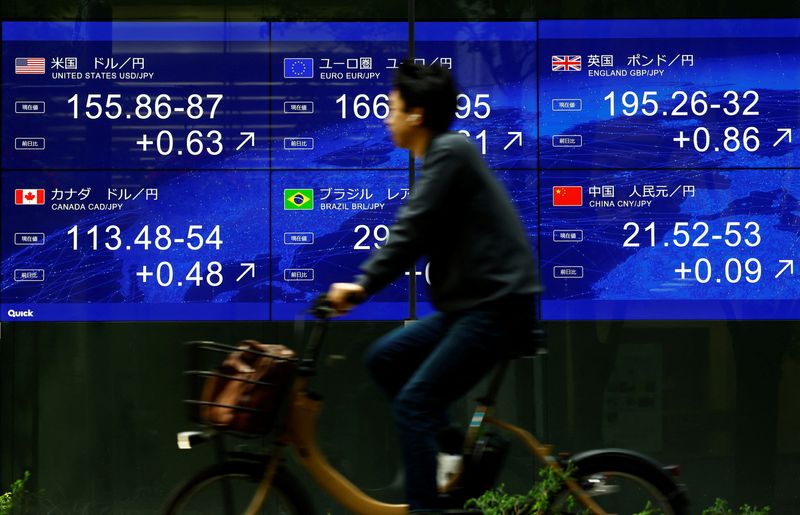
By Ankur Banerjee and Rae Wee
SINGAPORE (Reuters) – Japan appears to have bought some time and respite for a tumbling yen through its latest bursts of suspected , yet it has also set itself up for a protracted war with a market that views the currency as a compelling sell, analysts say.
Traders estimate the Bank of Japan (BOJ) spent nearly $59 billion defending the currency this week, helping to put the yen on track for its best weekly performance in over a year.
The Japanese currency is up 5% from the 34-year low of 160.245 it plumbed on Monday. Tokyo is yet to confirm it had intervened.
But this week’s rally has been anything but linear in a market decidedly bearish on the currency, given the massive gap between its ultra-low yields and those in other major economies.
The yen has swung wildly during the suspected intervention bouts, gaining nearly 5 yen in a matter of minutes and relinquishing part of that speedily.
“Nothing’s actually changed,” said Rob Carnell, head of Asia-Pacific research at ING. “I think this has provided a momentary pause in what will inevitably be tested by markets again, who will see this as free money when they take on the BOJ….”
Carnell says the yen has become “a trader’s dream”, as they can make easy money by simply buying dollars for yen, waiting for the pair to rise and then selling it as the BOJ steps in to support the yen.
remove ads
.
“You’d be mad not to test it, knowing that they will step in at some stage,” he said.
Before this week’s suspected forays into the market, Japanese authorities last intervened between September and October in 2022 spending around $60 billion to defend the currency.
The yen was then near 152 per dollar, but within two months of that intervention it was sliding again. It had shed 20% more of its value against the greenback when it hit 1990 lows this week.
“Because of the wide rate differentials, speculators will still be on the other side of this trade,” said Kaspar Hense, a senior portfolio manager at BlueBay Asset Management.
The spread between the benchmark 10-year U.S. Treasury and Japanese government bond yields is nearly 4 percentage points.
NO TARGETS
Ben Bennett, Asia-Pacific investment strategist at Legal And General Investment Management, says Japan’s Ministry of Finance, whose mandate it is to manage the yen, is well aware of how monetary settings are stacked against the yen and is only acting to contain the pace of depreciation.
“Intervention comes at a cost, and I think the MOF would be unwilling to throw money at a specific target,” he said.
Even after the BOJ’s landmark move away from negative rates in March, the yen remains the cheapest major currency to borrow and short-sell, sealing its fate.
Analysts say that complicates forecasts for the yen, but it appears like the 160 level is one the BOJ wants to protect.
Hirofumi Suzuki, chief currency strategist at Sumitomo Mitsui (NYSE:) Banking Corporation in Tokyo, reckons Japanese authorities find the decline after their March meeting “speculative and unacceptable” and might be aiming to get the yen back to 155 to a dollar where it was before that momentous policy decision.
remove ads
.
Yujiro Goto, head of currency strategy for Japan at Nomura, feels the authorities merely want to help their importers get the dollars they need.
“I think 150 is ideal for Japanese importers. I think around the 152–152.50 level is probably what MOF wanted to have, but it didn’t hit that level, so there is a risk that MOF might come back for another round.”
Speculators also realise that the government’s war chest isn’t bottomless. Japan has about $1.3 trillion in currency reserves, but only around $155 billion that it holds in dollar deposits are liquid.
Meanwhile, Federal Reserve rate cut bets are receding as the U.S. economy and labour markets stay hot. Speculative short yen positions have run up to their largest in 17 years.
Fred Neumann, chief Asia economist at HSBC, says Japan is only trying to end the asymmetric one-sided speculation, rather than defend any yen levels.
“Given the reality of higher U.S. interest rates for longer, this is an expectations management exercise. It’s not an exercise to necessarily deliver a rapid appreciation of the yen,” he said.
($1 = 152.8600 yen)
Forex
Dollar steadies, but on track for sharp weekly loss
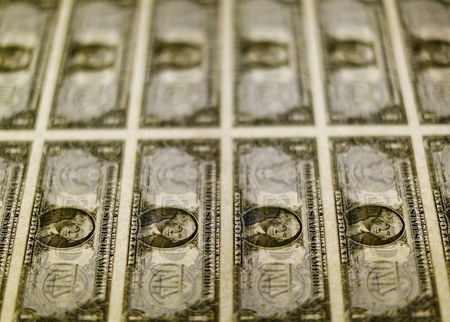
Investing.com – The U.S. dollar edged higher in European trade Friday, but was on track for a hefty weekly fall after cooling inflation and weak retail sales brought Federal Reserve rate cuts back into focus.
At 04:10 ET (08:10 GMT), the Dollar Index, which tracks the greenback against a basket of six other currencies, traded 0.2% higher at 104.580, marginally above a five-week low just below 104 seen earlier this week.
Dollar steadies after hawkish Fed speak
The dollar has recovered to a degree as several Fed officials, specifically members of the bank’s rate-setting committee, said that they needed much more confidence that inflation was coming down, beyond some easing inflation in April.
“I now believe that it will take longer to reach our 2% goal than I previously thought,” St. Louis Federal Reserve president Loretta Mester said on Thursday, adding that further monitoring of incoming data will be needed.
Federal Reserve Bank of New York President John Williams agreed with this view.
“I don’t see any indicators now telling me … there’s a reason to change the stance of monetary policy now, and I don’t expect that, I don’t expect to get that greater confidence that we need to see on inflation progress towards a 2% goal in the very near term,” Williams said.
However, the dollar is still on course for a weekly loss of around 0.7% after the milder than expected U.S. data raised expectations the will deliver two interest rate cuts this year, probably starting in September.
remove ads
.
U.S. were also flat in April and softer-than-expected, and manufacturing output unexpectedly fell.
“Our view for the near term remains that we could see a further stabilisation in USD crosses as markets await the next key data input: April core PCE on 31 May,” said analysts at ING, in a note.
Euro slips ahead of CPI release
In Europe, traded 0.1% lower to 1.0860, having traded as high as 1.0895 in the wake of U.S. inflation release, but the single currency is still up around 0.9% on the dollar this week.
The final reading of the is due later in the session, and is expected to show inflation rose by 2.4% on an annual basis in April.
The is widely expected to cut interest rates in June, but traders remain unsure of how many more cuts, if any, the central bank will agree to over the course of the rest of the year.
Traders have priced in 70 basis points of ECB cuts this year – a lot more than the just under 50 bps of easing priced in for the Fed.
fell 0.1% to 1.2658, but is still on track for gains of around 1% this week.
The Bank of England is also expected to cut rates from a 16-year high this summer, but volatility is likely to be limited ahead of the release of key U.K. inflation figures next week.
Yen slips after weak Japanese GDP data
In Asia, rose 0.3% to 155.87, close to breaking above 156, after weaker-than-expected Japanese data for the first quarter.
remove ads
.
traded 0.1% higher at 7.2209, moving back to six-month highs above 7.22 after data earlier Friday showed grew more than expected in April, but growth in slowed sharply, while a decline in Chinese house prices accelerated last month.
Forex
ING anticipates EUR/GBP rise as BoE rate cut bets increase
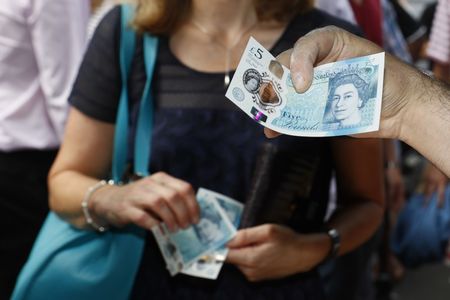
Broker ING noted the potential downside risks for the British pound, noting the currency’s recent decline from its peak against the euro. The GBP’s sensitivity to the performance of US equities was highlighted as a contributing factor to its movement.
The firm also observed a decrease in volatility for the pair as the market anticipates the release of key Consumer Price Index (CPI) figures in the UK scheduled for next week.
ING’s UK economist suggests that there may be a dovish tilt in expectations for the Bank of England’s (BoE) monetary policy. The firm maintains a favorable outlook on the possibility of the EUR/GBP pair rising, as market participants might increase their wagers on a potential interest rate cut by the BoE in June.
The British financial markets were focused on a speech delivered by Catherine Mann of the BoE, who is regarded as the most hawkish member of the Monetary Policy Committee (MPC).
This event followed comments made by Megan Greene, who recently shared a cautiously optimistic perspective on inflation, mirroring sentiments expressed by BoE Governor Andrew Bailey at the last meeting.
ING’s commentary comes as investors and analysts closely watch the central bank’s moves, which could significantly influence currency valuations. The anticipation of UK CPI data and the BoE’s potential response are key factors in the firm’s analysis of the GBP’s trajectory.
This article was generated with the support of AI and reviewed by an editor. For more information see our T&C.
Forex
Dollar decline pauses, markets eye April core PCE data
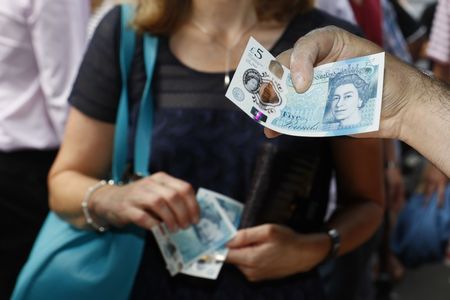
The US dollar’s recent downtrend halted, aligning with forecasts by financial institution ING. Analysts observed that US economic data has not provided sufficient momentum to drive a significantly weaker dollar at this time.
This comes after jobless claims dropped to 222,000 from a previous week’s increase to 232,000. The labor market had shown similar patterns in January, with claims peaking at 225,000 before falling back to the range of 200,000 to 210,000.
ING anticipates a potential stabilization in USD currency pairs as investors await the release of the April core Personal Consumption Expenditures (PCE) price index, scheduled for May 31. The firm suggests that cross-asset volatility could remain subdued in the coming weeks, which may boost the search for carry trades.
Consequently, they express a lack of optimism for a recovery in the Japanese yen, currently deemed the most attractive funding currency.
In related developments, China’s latest economic figures influenced market sentiment. The country reported a 6.7% year-on-year increase in April industrial production, surpassing the expected 5.5%.
However, retail sales underperformed, registering a 2.3% growth against a forecasted 3.7%. According to ING’s economist, the data reflects ongoing caution among households and the private sector in China.
The US economic calendar for today includes the Leading Index, which is anticipated to have remained at -0.3% in April. Additionally, Federal Reserve officials Chris Waller, Neel Kashkari, and Mary Daly are scheduled to speak. ING forecasts the (DXY) to trade within the 104-105 range in the near term.
remove ads
.
This article was generated with the support of AI and reviewed by an editor. For more information see our T&C.

 Forex2 years ago
Forex2 years agoForex Today: the dollar is gaining strength amid gloomy sentiment at the start of the Fed’s week

 Forex2 years ago
Forex2 years agoHow is the Australian dollar doing today?

 Forex1 year ago
Forex1 year agoUnbiased review of Pocket Option broker

 Forex2 years ago
Forex2 years agoDollar to pound sterling exchange rate today: Pound plummeted to its lowest since 1985

 Cryptocurrency2 years ago
Cryptocurrency2 years agoWhat happened in the crypto market – current events today

 World2 years ago
World2 years agoWhy are modern video games an art form?

 Stock Markets2 years ago
Stock Markets2 years agoMorgan Stanley: bear market rally to continue

 Economy2 years ago
Economy2 years agoCrude oil tankers double in price due to EU anti-Russian sanctions

